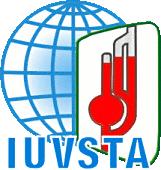Speaker
Description
Scanning electron microscopy (SEM) and atomic force microscopy (AFM) are two of the most used, complementary techniques for surface analysis at the nanoscale. Thus, combining them by integrating a compact AFM into SEM brings novel possibilities for true correlative imaging and advanced multi-modal sample characterization that would be often unfeasible using each imaging modality separately.
LiteScope is produced by the NenoVision company and represents a compact AFM, which is designed to be integrated into a large variety of SEMs in a plug-and-play manner. In general, the strength of the AFM-in-SEM hybrid system lies in combining the AFM modes (3D topography, electrical, mechanical and magnetic measurements) with SEM capabilities (fast imaging with wide resolution range, chemical analysis, surface modification using FIB/GIS etc.). Further benefits include precise AFM tip navigation by SEM to the region of interest, roughness evaluation and in-situ conditions, which is essential for sensitive samples and minimizes sample handling. Uniquely, LiteScope design enables simultaneous acquisition and correlation of AFM and SEM data by NenoVision’s proprietary technique called Correlative Probe and Electron Microscopy (CPEM).
CPEM functionates in a way that the electron beam and AFM tip keep a constant offset and remain static during the image acquisition. The scanning movement is conducted by a piezo scanner that carries the sample. This ensures simultaneous SEM and AFM data collection in the same coordinate system and with identical pixel size. The resulting 3D CPEM view can combine multiple channels, both from AFM and SEM, enabling thorough sample analysis and clear data interpretation for specific applications.
In conclusion, the AFM-in-SEM strategy benefits from the complementarity of both techniques alongside significant savings both in time and resources. Also, it opens completely new possibilities for advanced data correlation and measurements in variety of industrial and research applications, such as semiconductors, material-, biological- and earth-sciences.

